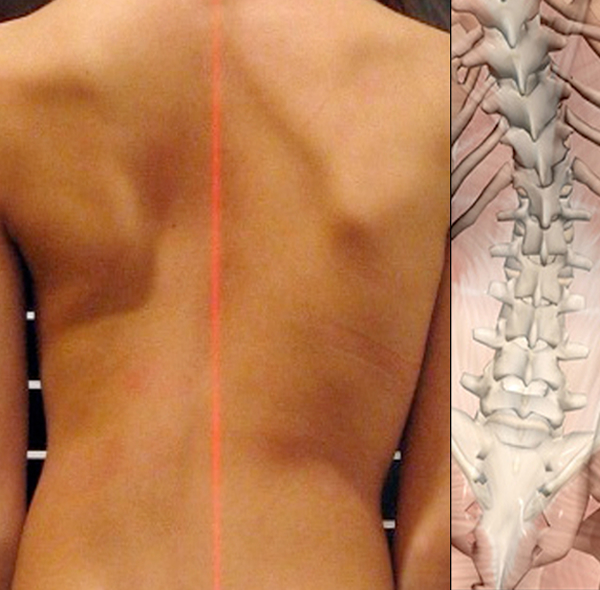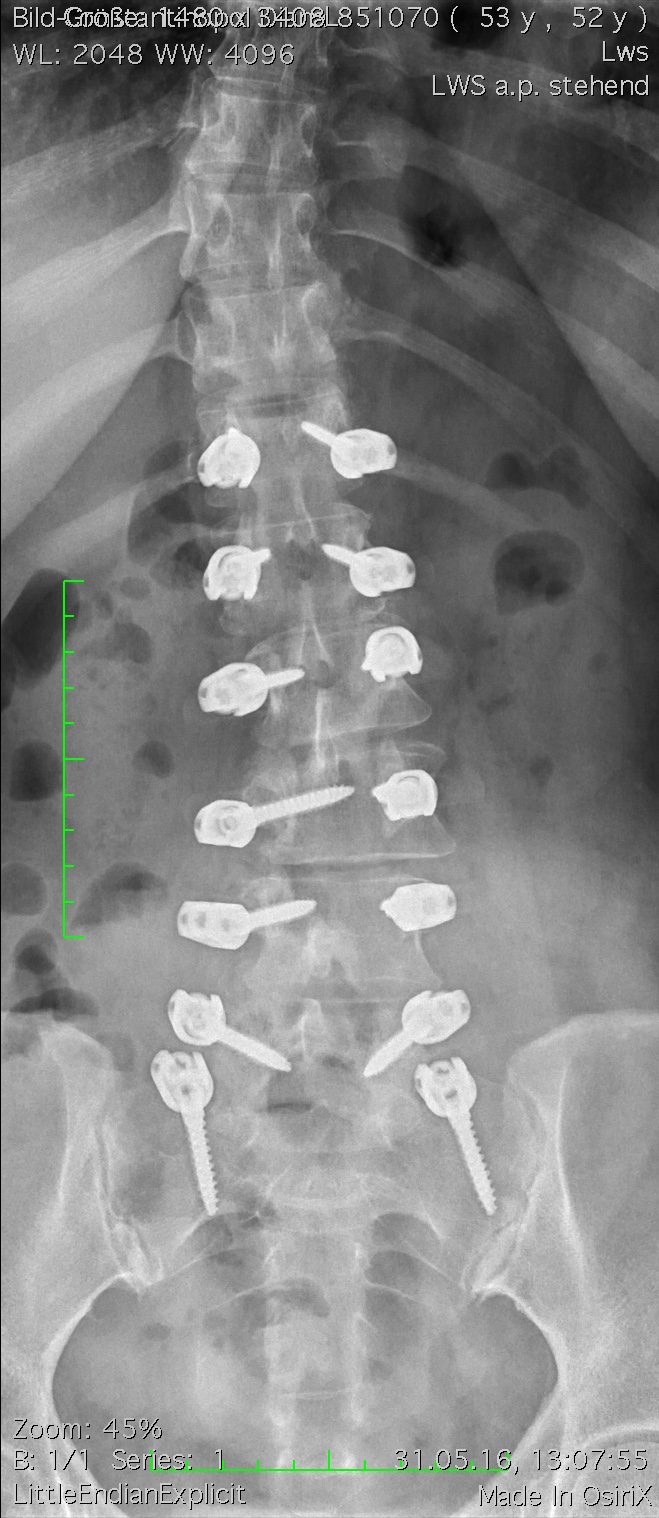
Instability – Spondylolisthesis – Scoliosis
Instability of the spine – spondylolisthesis – pseudo spondylolisthesis – scoliosis
Instability in a vertebral segment can be acquired by a degenerated disc or may be congenital. The loss of function of the affected segment can lead to to muscle imbalances which allow adjacent vertebrae to shift, which is called pseudospondylolisthesis. However, if there is a congenital vertebral arch gap causing two vertebrae to rub against each other, we talk of a real slipped vertebra, or spondylolisthesis. Often the upper vertebra slips forward towards the abdomen, whereas the lower vertebra maintains its position. If the two vertebrae slip laterally towards each another we describe it as a scoliosis. This can also be congenital and can occur as idiopathic scoliosis in childhood or adolescence. Degenerative scoliosis is a result of disease of the intervertebral discs and only occurs secondarily during adulthood . Excessive mobility of the vertebral sections can cause severe pain. On the one hand, the discs are worn by excessive friction and on the other hand, the nerve tissue in the spinal canal is exposed to compression and tensile pressure, which damages the spinal cord or spinal nerves, and can also cause muscle weakness and pain. Depending on the degree of displacement and the patient’s symptoms, conservative treatment with muscle exercises and pain medication or surgical stabilisation are options. This should always consider a reconstruction and stabilisation of the vertebral joints from the rear, as well as a stabilisation from the front by replacement of the affected intervertebral disc. Recent clinical trials have shown here that a dynamic stabilisation of the affected vertebral segment is a practical alternative to rigid fusion.
Spondylolisthesis = vertebrae slippage between the 4th and 5th lumbar vertebrae, reconstruction and dynamic stabilisation with viscose-elastic disc prosthesis and dynamic fixator


Scoliosis of the lumbar spine, dynamic correction with a cage and two viscose-elastic disc protheses. Also 3 years after the operation (image right) we see ideal positioning of the spinal column axis.
Torsionsscoliosis of 40° (left picture)
Dynamic correction spondylodesis with flexible carbon fixator (right picture)
Literature
Bertagnoli, R., ( 2011) Hybridverfahren, in: Bertagnoli, R. et al. (Hrsg), Bewegungserhaltende Wirbelsäulenchirurgie, Urban&Fischer, München Rischke,. B. (2013) , in: Viscoelastic Lumbar Total Disc Replacement in the Treatment of Spondylolisthesis and Degenerative Scoliosis




